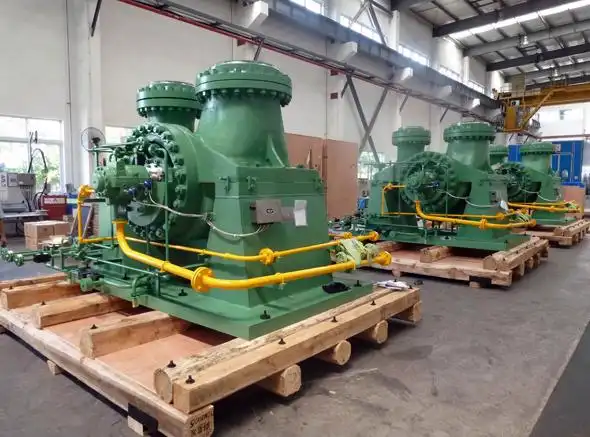Nuclear power pumps are one of the most important equipment in nuclear power plants. They play an indispensable role in ensuring the safe and stable operation of nuclear reactors and the efficient power generation process. Nuclear power pumps are mainly used to circulate coolant (such as water or liquid metal) through the reactor core, remove the heat generated inside the reactor, prevent the reactor from overheating, and ensure the normal operation of the nuclear power plant. With the continuous development of nuclear energy technology, the design and application of nuclear power pumps have also experienced significant progress.
Basic principles and functions of nuclear power pumps
Nuclear power pumps usually use electric motors to drive the pump body to rotate, transporting coolant from the reactor core to heat exchange equipment such as steam generators, and then returning the coolant to the core through the pipeline system. In this process, the key function of the pump is to ensure the stable flow of coolant and maintain the safe temperature of the reactor. To this end, nuclear power pumps must be efficient, reliable, high temperature resistant and radiation resistant.

Application fields of nuclear power pumps
Nuclear power pumps are widely used in various types of nuclear power plants, especially pressurized water reactor nuclear power plants and fast reactor nuclear power plants. The following are several major application scenarios:
Pressurized water reactor nuclear power plant: The core of a pressurized water reactor nuclear power plant is to remove the heat generated by the core through coolant circulation to ensure the safe and stable operation of the reactor. The nuclear power pump is responsible for circulating the coolant in this system to ensure that the reactor temperature remains within a safe range.
Fast reactor nuclear power plant: Fast reactor nuclear power plants use liquid metal as coolant, which has high thermal conductivity and low temperature rise. Nuclear power pumps need to cope with more stringent working environments in this system, so higher requirements are placed on the pump’s high temperature resistance and corrosion resistance.
High temperature gas-cooled reactor nuclear power plant: In high temperature gas-cooled reactor nuclear power plants, the coolant is usually carbon dioxide or helium. Nuclear power pumps need to adapt to the characteristics of gas circulation and ensure efficient heat exchange and cooling functions.

Technical Challenges of Nuclear Power Pumps
Although nuclear power pump technology has made significant progress, it still faces some technical challenges:
High temperature and high pressure environment: Nuclear power pumps need to operate stably under high temperature and high pressure conditions, which puts higher requirements on pump materials and structural design. How to improve the high temperature resistance and corrosion resistance of the pump and maintain its efficient operation is an important topic.
Radiation environment: The radiation environment inside the nuclear power plant is complex. As an important core equipment, nuclear power pumps are in a radiation environment for a long time. How to select radiation-tolerant materials to ensure the stability and life of the pump in a radiation environment is the key to technology research and development.
Operation stability: Nuclear power pumps must maintain efficient and stable operation to prevent failures that cause failure of the nuclear reactor cooling system. The introduction of intelligent monitoring and fault warning technology has become an important means to ensure the stable operation of nuclear power pumps.
Future development trends
With the continuous development of nuclear energy technology, nuclear power pumps will also develop in a more intelligent and efficient direction. Future nuclear power pumps may incorporate more intelligent control systems, automatically adjust the working state through real-time monitoring and data analysis, improve energy efficiency and reduce failure rates. At the same time, environmental protection and sustainable development will become important considerations in the design of nuclear power pumps. How to reduce energy consumption during operation and increase the service life of equipment will be the focus of future research.
In addition, with the rise of small modular nuclear power plants, nuclear power pumps also need to adapt to smaller and more flexible design requirements to meet the needs of nuclear power plants of different sizes.

Conclusion
As a key equipment in nuclear power plants, the continuous innovation of nuclear power pump technology development and application has not only improved the safety and operating efficiency of nuclear power plants, but also made important contributions to the sustainable development of the global energy field. With the continuous advancement of technology, nuclear power pumps will play a greater role in intelligence, high efficiency and environmental protection in the future, promoting the development of the nuclear energy industry.

